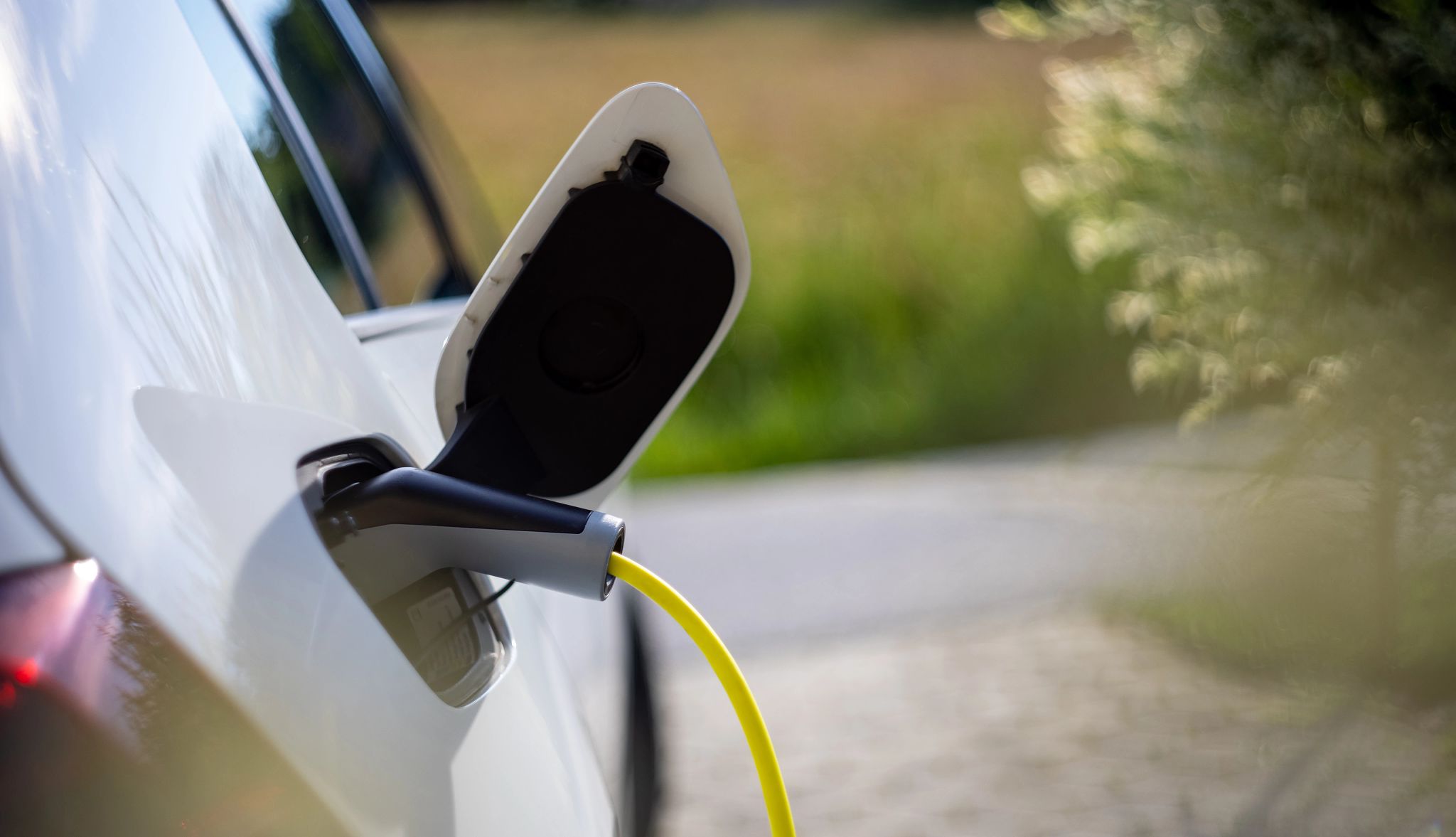AARP Hearing Center


Thinking of joining the electric car revolution? The transition from gasoline-powered to battery-powered vehicles is well underway, with many large automakers promising to shift their entire fleets to electrification by the end of this decade or the next. According to research firm S&P Global Mobility, the average American car is now around 12 years old. That means the next new vehicle you buy will likely be electric. So what should you think about as you prepare for this profound change?
This AARP smart guide provides practical guidance to help you navigate this seismic shift in how Americans get from place to place. We’ll help you choose the type of electrified vehicle (EV) that’s right for you and understand the various charging options available, and show you how to take advantage of the unique opportunities an EV provides.


HOW TO GET STARTED
1. Understand the terminology
There are three main types of electrified vehicles. A hybrid vehicle has a gasoline engine and an electric motor or motors that work with a generally small battery to increase fuel efficiency. A plug-in hybrid vehicle (PHEV) combines a gas engine with a larger battery that achieves the same effect, but you can also plug it in for full recharging. This allows for roughly 20-40 miles of pure electric driving. And a battery electric vehicle (BEV) does away with gasoline entirely; only rechargeable batteries and electric motors power the car.
2. Factor in home charging
If you’re planning to purchase a full-battery electric vehicle and use it as your primary mode of transportation — for trips around town, commuting and longer-distance drives — it’s almost essential to have a home where you can install a dedicated 240-volt electrical line (like the kind used for an electric dryer) close to where you park, to charge your car. (This is Level 2 charging; see more below.) “The main consideration, and the one that’s probably the hardest, is home charging,” says Ed Loh, head of editorial for the Motor Trend Group, which publishes Motor Trend and Hot Rod magazines, and cohost of The InEVitable podcast, about the future of the car. “I think we’re still in this position — in cities, suburbs and rural areas — where the public charging infrastructure isn’t quite there yet for everyone. So, if you want to buy a full-battery electric vehicle as your only vehicle, you really have to have the ability to charge it at your house, and that’s that.”
3. Consider a regular hybrid
If you’re not in that situation and you still want an electric vehicle, consider a regular hybrid — one that does not require a plug. “If you’re a person who lives in a multiple-unit dwelling or a house where you have to park at the curb, or for whatever reason you’re not able to park your car in a predictable space every night that has electricity nearby, a plug-in hybrid or BEV may not be the right choice for you,” says John Voelcker, a contributing editor at Car and Driver magazine who has covered EVs for over a decade.
4. Or look into a plug-in hybrid
Not ready for a fully battery-powered vehicle but still want to do some electric-powered driving with the option to go long distances without recharging? A plug-in hybrid electric vehicle can be a great solution. “Hybrids are the best of both worlds, especially if you can get one that has a significant amount of full-electric driving range,” Loh says. There are many options available from manufacturers — sedans, compact SUVs, full-size SUVs, wagons — that top 35 miles of battery range, which is roughly the distance the average American drives each day.
5. Understand the category gaps
Despite the significant increase in the number and types of electric vehicles in recent years, not every category is available.
"There are not currently, for instance, purely electric sports cars there,” Voelcker says. “We’re just getting to the point where we're going to have three-row, full-size SUVs. There aren't midsize pickup EVs yet. And there’s a plug-in hybrid Pacifica minivan, but no BEV minivans.”


MAINTAINING A CHARGE
6. Understand power levels
There are three different levels and speeds of EV charging. The one that most people are probably most familiar with is Level 1, says Shelley Francis, co-founder and managing partner of EVNoire, a consultancy for electric, connected, shared and autonomous mobility solutions. “That’s a standard 110-volt outlet, like the kind in your house.” Next is Level 2, which uses a 240-volt electric line — similar to those used on certain home appliances. Francis says that can charge between 20 to 40 miles an hour, depending on the equipment. The fastest charger, Level 3, can provide several hundred miles in an hour. “So you’re not going to have it in your garage or your driveway,” Francis says. “It’s only going to be for commercial use. You’ll see it on highways or at the grocery store or in a Walmart parking lot.”
7. Install a home charger
Installing a Level 2 charger at your home generally requires a certified electrician, and it can cost several thousand dollars. “It’s just like an electric stove circuit or an electric welder,” Voelcker says. Costs can vary but typically are in the $1,000 to $2,500 range, which includes the cost of the charging unit, the charging cable and professional installation. And be sure to use a certified electrician or someone that is familiar with EV specifics. “And then it’s just a question of where are you going to put the charging station? How much wiring does that require from the panel? Because you have to have a dedicated circuit for the charging station.” Your car dealer or your electric utility provider often can connect you with expert local installers. Federal tax credits of up to 30 percent of the hardware and installation costs, up to $1000, may be available for installation.
8. Or just use a wall outlet
Not all electrified cars require a dedicated 240-volt outlet. If you select a plug-in hybrid electric vehicle or a full-battery electric vehicle with limited range, charging on a standard household outlet — which can provide about four to five miles of range for each hour it’s plugged in — is a perfectly viable option, as you can readily gain enough juice overnight. This is particularly relevant as the average American drives less than 40 miles each day.
9. Save money while you sleep
EV owners who charge at home can get savings on the power bills from many electric utility companies. These are accessible by programming your car or your home charger to run at night, when electrical demand — and prices — are lower. “Generally, people don’t know this, but they should charge during off-peak hours,” from around 11 p.m. to 7 a.m., Francis says. Information on these programs is available from your local utility, but make sure you investigate fully and request the special rate. “Sometimes they do have a special program for EV drivers, but you have to ask for those specifically,” she says.
10. The 80/20 rule
Batteries charge at different rates. The general rule is that charging batteries is akin to blowing up a balloon: the first and last 20 percent are the hardest. Additionally, regularly charging your battery to 100 percent can degrade it more quickly. So, when charging for daily use or for a long trip, it’s ideal to keep the level in that 20 percent to 80 percent range.






























































You Might Also Like
Guide to Cleaning Your Car
We have tips on how to best clean your vehicle’s interior, exterior, storage and under-hood systems
Stay Safe in Your Car
Driver monitoring systems, traffic sign recognition and more, here’s what to look for in your vehicle
Tips to Find the Best Car for You
From making sure the screen text is large enough to having power seats, here’s what older drivers should look for
Recommended for You